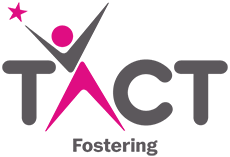“The more you know about the past, the better prepared you are for the future.”
—Theodore Roosevelt
Whilst LGBTQ+ rights within fostering and adoption keep growing every year, it cannot be forgotten that the road to getting equality was (and still is) a long one. At TACT, we take total inclusivity and support for both our LGBTQ+ carers and young people very seriously. In alignment with LGBTQ+ History Month, let’s take a look back into the history of LGBTQ+ rights in the world of UK fostering and adoption.
1980s
Going back to the 1980s, it was sadly the norm for many fostering and adoption agencies to reject applicants purely on the basis of their sexuality. Most lesbian or gay applicants who were approved were able to do so because they were single carers who hid their sexuality, whereas those who were open about it largely received negative and prejudicial attitudes. Two huge events made history in the year 1988 – one of which was very positive and the other very negative. Dorian Jabri and Jane Skeates produced their report; Fostering and Adoption by Lesbians and Gay Men, the first UK publication to argue that the opposition to LGBTQ+ people fostering/adopting was unfounded and based on discriminatory stereotypes. Whilst this was a huge step forward, it was the very same year that Section 28 of the Local Government Act 1987/88 was passed by Thatcher’s Conservatives; ‘A local authority shall not promote the teaching in any maintained school of the acceptability of homosexuality as a pretended family relationship’. Thatcher said herself at the time that children who were taught they have a right to be gay were “being cheated of a sound start in life”. This was unbelievably damaging to the LGBTQ+ Fostering and Adoption cause and an attempt to legitimise discriminatory ideas. It was hugely protested by LGBTQ+ campaigners at the time, as it gave agencies who were already opposed to gay or lesbian carers a lawful justification for doing so, as well as making agencies who were more generally quiet about the topic too nervous to approve any of these applicants.
The ripple effect of this legislation caused the formation of the national Lesbian & Gay Foster & Adoptive Parents Network, to provide support and campaign for equal rights. This included not only campaigning to get equality within the application process to foster and/or adopt but also to improve the standards for existing LGBTQ+ foster carers, who felt they faced constant discrimination from their agency or Local Authority due to negative stigma, like not being given any placements or only getting respite placements. Throughout the early 1990s, both media coverage and government legislation continued to impede progress. Publications released big stories using harmful language with no proper verification of their claims (for example, the Sunday Express claimed children were ‘being handed over to homosexual couples… despite expert advice that the youngsters may grow up to become sexually deviant themselves’), and the Government published a damaging paper on family placement under the Children Act 1989 which stated that ‘the chosen way of life of some adults may mean that they would not be able to provide a suitable environment for the care and nurture of a child.’ It made the claim that ‘No one has a right to be a foster parent’ and that ‘Equal rights and gay rights policies have no place in fostering services.’ This kind of language spurred many social services to continue to believe that a queer identity could be an inappropriate environment for foster children.
1990s
Despite these deterrents, campaigners continued to fight and the 1990s saw the publication of several important articles discussing LGBTQ+ foster care and adoption. Helen Cosis Brown published papers in the Adoption & Fostering journal examining the apparent conflict between the rights of foster children to receive good-quality home environments and the rights of gay and lesbian applicants to be fairly assessed, arguing that they could co-exist, especially seeing as these applicants had proved their ability to be extremely capable of providing excellent homes. She went on to advise social workers not to be influenced by society’s stigmatisation.
As more lesbian and gay couples were applying to foster, there continued to be deep issues within the assessment process. The Lesbian & Gay Foster & Adoptive Parents Network reported in a survey of their members that many felt they had to educate their social worker on sexual identity as they appeared uncomfortable, and long-term fostering or adoption was not welcomed as an option. Gay foster carer Don Smart stated in a 1991 Community Care debate that he and his partner were required to undergo psychiatric testing (something heterosexual applicants did not have to do), and other research at the time confirmed LGBTQ+ applicants were subject to more scrutiny. In 1992, the Government published a paper on adoption law which advised the most stable placements ‘are still more likely to be provided by parents who have made a publicly recognised commitment to their relationship’. Whilst this did not appear to directly disregard LGBTQ+ people (as it stated single applicants could still be good choices), the following White Paper issued a strong preference for married couples in adoption. As gay marriage was illegal, this clearly reinforced the idea that LGBTQ+ people should only be adopting as single people – and as a last resort.
Throughout the mid 90s, numbers of approved LGBTQ+ carers were growing, but in 1994, The Children Society faced a scandal where they were exposed for operating a policy which automatically rejected all applications from lesbian or gay foster carers. It was leaked to the press from within, with some employees leaving the organisation in protest. They did not reconsider this policy until 1999. In 1998, despite working to emphasise equality of opportunity within foster care and adoption, the new Labour government still argued in its Green Paper Supporting Families that ‘marriage is still the surest foundation for raising children’, supporting this as the preferred dominant view of society. In 1999, Stephen Hicks and Janet McDermott co-edited the book Lesbian and Gay Fostering and Adoption: Extraordinary yet ordinary, which was overseen by multiple LGBTQ+ fostering and adoption support and campaign groups. It was produced in order to raise awareness of the issues in hopes it would educate those in the social work field. Many foster carers who contributed reported concerns social workers/panels had raised related to assumptions based on socially constructed gender roles. Gay men expressed that they were subject to the harmful misconception that men could not or should not be the primary carers of children, especially gay men who could pose a sexual risk. LGBTQ+ carers felt they were assumed to not know anybody of the opposite gender and were likely clueless on any tasks that were traditionally expected of the opposite gender; one panel was even concerned two men would not be able to do the laundry, for example. However, the book also highlighted some positive changes since the 1980s, such as the recognition that LGBTQ+ carers now more often recommended being open about their sexuality on application, with an expectation that social workers were now more likely to take them seriously.
2000s – 2010s
Section 28 was not revoked until 2000 in Scotland and 2003 in the rest of the UK, and the early 2000s was certainly a mixed bag in terms of progress. At a national conference in Manchester in 2000, issues were raised about the need to ‘shop around’ for specific agencies who were known to be inclusive to LGBTQ+ applicants, as several agencies were noted to consistently reject these applications. Then in 2002, parliamentary debates on the Adoption and Children Act were controversial – with some arguing that adoptions by lesbian and gay couples should be outlawed or should be a complete last resort, whilst others argued LGBTQ+ applicants should not be treated any differently. However, the general consensus was that the priority should go: 1) married couples 2) unmarried couples 3) gay couples; the heteronormative stance still being the preferable one. There continued to be much debate over the decade, with LGBTQ+ support and campaign groups pushing the idea that LGBTQ+ families were helping to redefine traditional ideas about what a family should be. Organisations such as the Christian Institute however funded publications and campaigns asserting the view that gay and lesbian parenting was damaging and will cause psychosocial or sexual damage to children, even sending a paper to all UK foster care and adoption panels instilling the fearmongering view that children placed with LGBTQ+ carers are more likely to become gay themselves. In 2003, a court judgement in Manchester approved the view that a boy needed both a female and male role model at home, thus ruling out any gay or lesbian carers.
Despite these reprehensible attempts to stop it, the number of LGBTQ+ carers continued to grow, and several agencies began to ask support and campaigning groups to provide them with LGBTQ+ advice and training courses. Throughout the 2010s, it started to become the norm to actually discuss the differences between heterosexual carers and LGBTQ+ carers, instead of trying to treat them the same. Carers began to feel more comfortable bringing up issues to do with children being potentially bullied in school for having gay carers or the family facing intolerance from schools and/or birth family members. Social workers began to see the benefits of having LGBTQ+ carers, like the fact they were highly skilled in dealing with prejudice and discrimination in productive and healthy ways, which had a positive impact on children. As time went on, encouraging discourse from young people themselves who had been raised by queer parents contributed to the gradual change of homophobic ideas within British society. Then in 2014, the legalisation of same-sex marriage was a huge milestone, and helped to legitimise same-sex couple families in foster care and adoption in the eyes of both the law and society as a whole.
Today
In more recent years, traditional ideas about what a family ‘should be’ have been thoroughly critiqued, as research continues to suggest that families (including heterosexual ones) who do not impose certain gender roles are likely hugely beneficial to children’s development and mental health. LGBTQ+ rights continue to be fought for, as unfortunately the community still faces adversity across multiple platforms in society. However, the eagerness to receive more diverse applications to foster is much more universally mainstream in 2022 and TACT are committed to consistently reassessing our culture and achieving full equality for our LGBTQ+ carers.
If you want to read more about the misconceptions VS the truths and benefits of having more foster carers who are LGBTQ+, please read our blog here.
If you or someone you know could be a great foster carer, enquire with TACT today!


